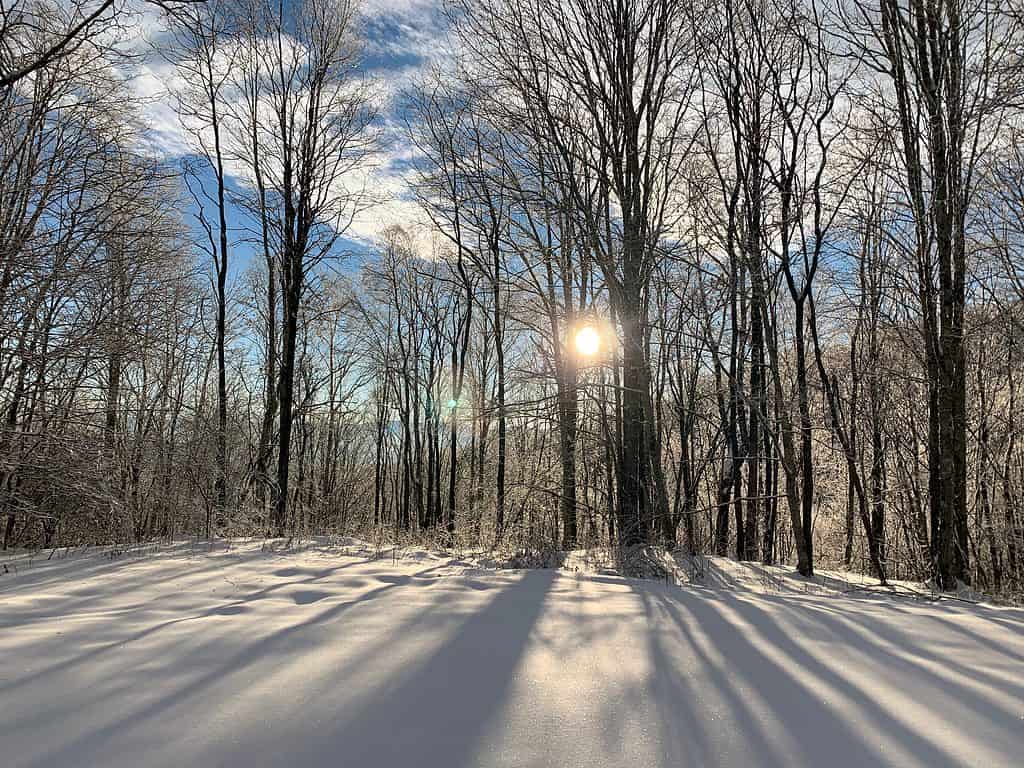Unless you’re thinking about the state’s western region, North Carolina isn’t often known for its snow. On average, North Carolina receives around 5 inches of snow each year. However, with above-average snowfall predicted for North Carolina this year, it may raise questions about some of the largest snowfalls to occur working. Below, discover one of the largest snowstorms to hit North Carolina on Christmas.
North Carolina’s Christmas Snowstorm

One of the biggest snowstorms to hit North Carolina on Christmas produced over a foot of snow in some areas.
©Yiwenz/Shutterstock.com
To learn more about one of the biggest snowstorms to hit North Carolina on Christmas, you’ll need to look back to December 1989. On December 23, a storm system presented off the coast of Florida. The storm systems moved across the peninsula to settle in the Atlantic Ocean, producing record-breaking snow levels in the southeastern United States. This includes North Carolina.
The coast of North Carolina experienced the highest amount of snow from this winter storm. Wilmington saw around 15 inches of snow. Other coastal locations, such as Cape Hatteras further north of the state, saw smaller but significant amounts, such as 13.3 inches.
Across the southeastern Atlantic, snow fell for several days due to the snowy storm system. In many areas, snow began to fall around the 22nd of December and didn’t stop until Christmas Eve.
Average Weather and Climate in North Carolina

Western North Carolina is no stranger to snow, but the same cannot be said for the rest of the state.
©Charles Collard/Shutterstock.com
As you learned above, snow isn’t common throughout North Carolina. However, what does the average weather and climate in the state look like?
Because North Carolina boasts such widely diverse ecosystems, from the mountains in the west to the coastal east, its climate varies. However, summers in North Carolina will be hot, with significant humidity. Winters are cooler, although rarely below freezing during the day for significant periods. The state’s eastern coast often experiences hurricanes, and tornadoes may appear, although rarely, inland.
The photo featured at the top of this post is © Eifel Kreutz/ via Getty Images
Thank you for reading! Have some feedback for us? Contact the AZ Animals editorial team.







